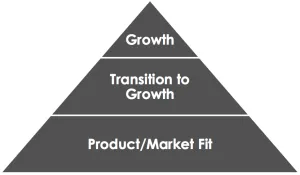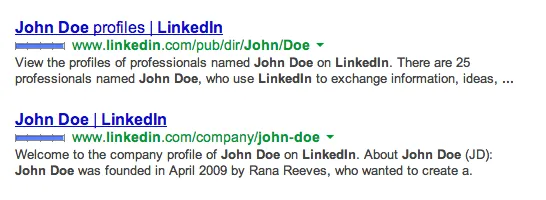The Missing Growth Hack – Don’t Get Left Behind
Growth Hacks are often fun and exciting techniques that, with little effort, can put your company on a rocket-ship trajectory, make a great company blog article or lead to a really compelling conference talk.
The problem is, many of us are missing one of the best available Growth Hacks and don’t even recognize it.
Typically we think of Growth Hacks as slight changes to our products and online marketing that can drastically increases our user signups, free to paid conversion or revenue. Basically, we like to focus on optimization conversion, instead of a general growth strategy. This thinking leads to Growth Hackers limiting the Growth Hacks we are willing to try.
Basics First

It’s tempting for all of us to jump right into testing the newest Growth Hacks. I want to take a moment and remind you that Growth Hacking works best when you have the basics in place. Sean Ellis created “The Growth Stage Pyramid” from his own experiences and by borrowing heavily from others.
1. Product / Market Fit
Finding Product/Market Fit is crucial to the success of your product. The reality is, that if you don’t find Product/Market Fit before you try to grow, you are working on an insolvable problem. This isn’t hard to understand if you think that without Product/Market Fit, you aren’t providing any real, sustainable value to your customers.
2. Transition to Growth
After you have found Product/Market Fit, it’s time to start the Transition to Growth. Notice the word Transition; the Stages of Growth model doesn’t go right from Product/Market Fit to Growth. This middle step is required because in the Product/Market Fit stage you spend so little time on growth that you really aren’t ready for it.
3. Introduce the Growth Hackers
Now, and only Now, can you really focus on growing your company. At this stage the exciting growth hacks we all like to read about can actually work. Remember, there is a lot of hard work required to get to this stage and if you get too eager you will end up with the cart in front of the horse.
Click Here to Read More
The Missing Growth Hack is Your Customers

As I mentioned earlier, Growth Hackers tend to focus on tweaking product or existing marketing. If you take a second and remember that each of your customers probably knows 5 people who could use your product right now you spot the major opportunity. The missing Growth Hack is your customers.
There are four fundamental rules that you need to follow before implementing a Growth Hack that includes your customers.
1. Make it Authentic
The foundation of absolutely every successful refer-a-friend program is based upon real, honest, authentic reviews from one close friend to another. In order for your refer-a-friend program to be a success, you need to establish your own foundation of authenticity. It’s odd to say this, but the first step to building a refer-a-friend program is to not build it at all: The first step is to make sure you have that foundation laid out. Check your customers’ reaction, look at your numbers, and do a gut check to see if you believe a refer-a-friend program would work for you.
2. Make it Friendly
In the modern web age User Experience (UX) isn’t just nice to have; fantastic user experience is king, and bad UX is a death sentence. LinkedIn, Dropbox and PayPal all have made small tweaks to their UX and gotten huge results. What does this teach us? It’s not a matter of just having a button, it’s a matter of having the right button in the right place.
3. Know and Measure your Metrics
When you design a refer-a-friend program for your web app, you need to understand what you’re going to get out of it and once it’s launched, you need to see if that happened. We’ll probably have to post another article entitled “What to expect from your refer-a-friend program” or “How to know how well your refer-a-friend program is doing”, but in the meantime, this little bit of advice will have to suffice.
4. Plan for the Future
Referral programs shouldn’t be static. You can’t just spend a couple weeks building your referral program, then turn your attention back to building your product and forget about it. This guide gives some advice for what works RIGHT NOW, but it’s not going to be true forever. Social networks are popping and dropping all the time, the web and the technologies that power it are evolving, mobile is becoming a force to be reckoned with, and the way that people expect to interact with each other are changing.
Click Here to Read More
An Extra Nugget Just for You
Don’t get confused this Growth Hack with “Going Viral.”
There is a common misconception that if you’re building a SaaS application, or any app for that matter, involving your customers to drive growth only matters if you can go Viral. The reality is that by adding a viral loop on top of your other marketing channels you will gain regardless.
The standard way of measuring if you are viral is known as your Viral Co-efficient (K-Factor). If you have a K-Factor of over 1 you are officially viral. Conceptually, this means for every user you acquire they will bring at least one extra user with them.
For SaaS companies, the honest truth is that you probably won’t ever go viral. However, please don’t take this to mean you shouldn’t try to grow with customer driven viral loops. As long as you have a great product with repeat customers a K-Factor as low as 0.2 will still result in a FREE extra user every time a user signs up.
You should look at your Viral Loop as a mini-growth accelerator that will enhance all of your other user acquisition efforts.
Click Here to Read More
An Example from LinkedIn

When LinkedIn looked at using their customers as the ultimate Growth Hack they discovered they had a unique advantage; they had millions of people’s personal profiles that were effectively implicit product referrals. LinkedIn turned everyone’s personal profile into searchable data so that when you are googling for a colleague’s information you were likely to find them on LinkedIn and then join in order to access their profile.
This Growth Hack follows all four of the fundamentals:
- Authentic – LinkedIn didn’t scrape the web to build a false list of users, they used real users.
- Friendly – The Growth Hack worked along with people’s natural
- Measure – LinkedIn measured new user signup resulting from this Growth Hack.
- Future – This Growth Hack continues to become more effective as more users join LinkedIn.